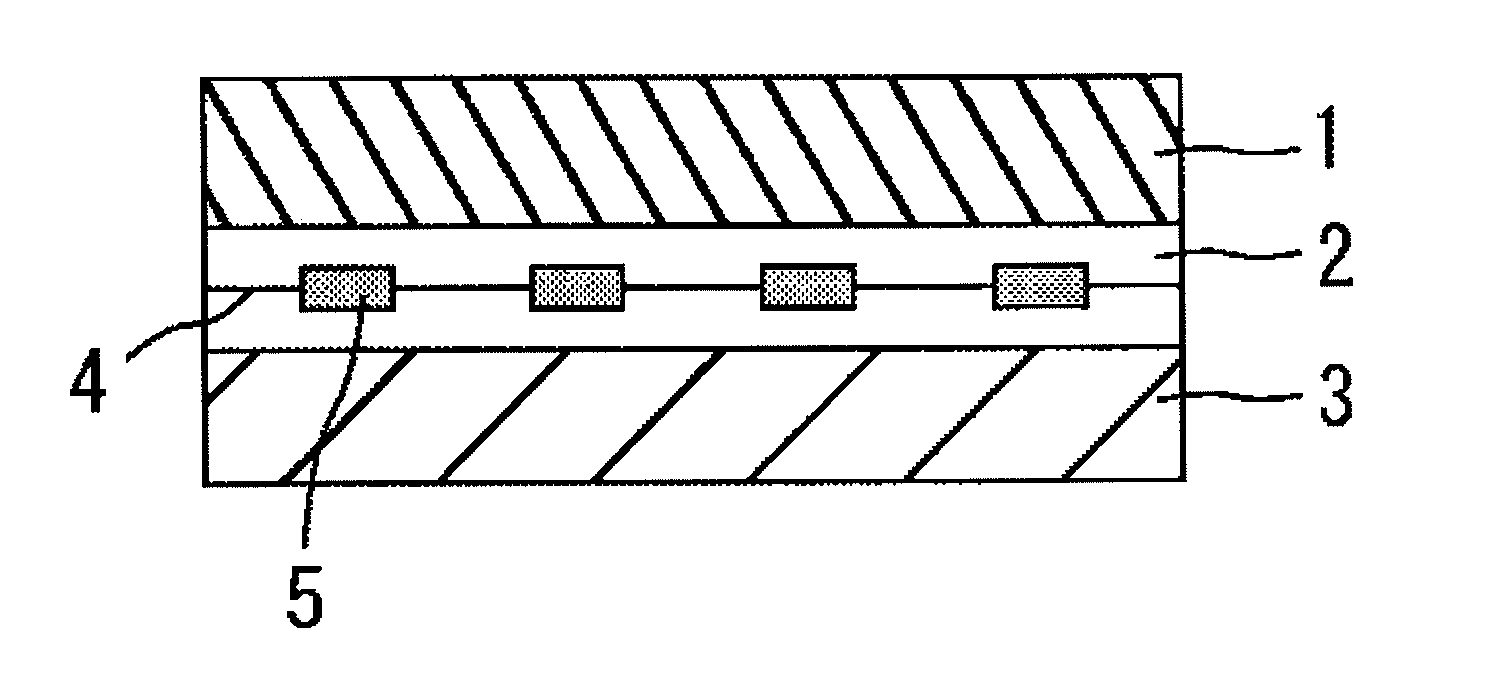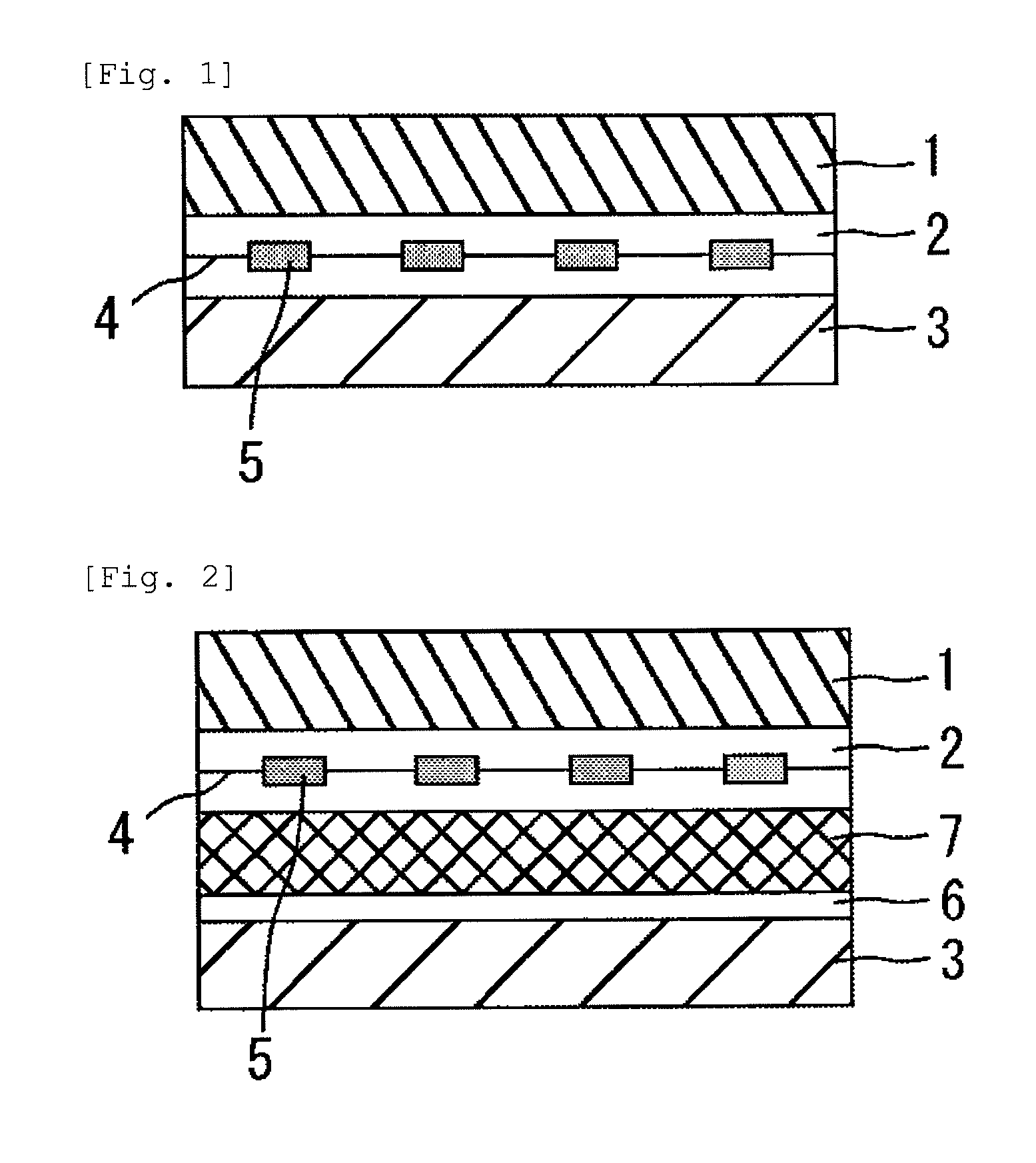Solar cell module, laminate, and method for production of solar cell module
a solar cell module and solar cell technology, applied in the direction of plasma technique, transportation and packaging, synthetic resin layered products, etc., can solve the problems of poor adhesion between fluororesin moldings or between fluororesin moldings and other materials, difficult to maintain their good weather resistance and moisture resistance, good durability, etc., to achieve excellent interlayer adhesion, maintain moisture resistance, and good weather resistance
- Summary
- Abstract
- Description
- Claims
- Application Information
AI Technical Summary
Benefits of technology
Problems solved by technology
Method used
Image
Examples
example 1
[0048]While nitrogen gas containing 0.3% by volume of vinyl acetate was passed through a corona discharge apparatus in the vicinity of the discharge electrode and roll-shaped earth electrode thereof (60° C.), the 0.025-mm-thick PCTFE film was continuously passed therethrough while being contacted with the surface of the roll-shaped earth electrode for one-side corona discharge treatment.
[0049]Then, a two-pack urethane type adhesive (product of Toyo Ink Mfg. Co., Ltd.; 15 parts of an ester type base resin, 1 part of an isocyanate type curing agent) was applied to the treated side of the treated PCTFE film to a thickness of 10 μm and, on the adhesive layer obtained, there was disposed a 188-μm-thick PET film (product of Toray Industries, Inc., X10S), and the whole was subjected to lamination at 70° C. The laminate obtained was subjected to 1000 hours of high-temperature, high-humidity testing (85° C.×85%); the levels of adhesive strength before and after testing were measured accordin...
example 2
[0050]The laminate was formed and the durability thereof was evaluated in the same manner as in Example 1 except that glycidyl methacrylate was used in lieu of vinyl acetate. The results are shown in Table 1.
example 3
[0051]The laminate was formed and the durability thereof was evaluated in the same manner as in Example 1 except that a styrenic rubber type adhesive (product of Hitachi Kasei Polymer Co., Ltd.; Hibon YA211-2) was used as the adhesive and that the lamination temperature was lowered to 25° C. The results are shown in Table 1.
PUM
| Property | Measurement | Unit |
|---|---|---|
| temperature | aaaaa | aaaaa |
| thickness | aaaaa | aaaaa |
| thickness | aaaaa | aaaaa |
Abstract
Description
Claims
Application Information
 Login to View More
Login to View More - R&D
- Intellectual Property
- Life Sciences
- Materials
- Tech Scout
- Unparalleled Data Quality
- Higher Quality Content
- 60% Fewer Hallucinations
Browse by: Latest US Patents, China's latest patents, Technical Efficacy Thesaurus, Application Domain, Technology Topic, Popular Technical Reports.
© 2025 PatSnap. All rights reserved.Legal|Privacy policy|Modern Slavery Act Transparency Statement|Sitemap|About US| Contact US: help@patsnap.com


